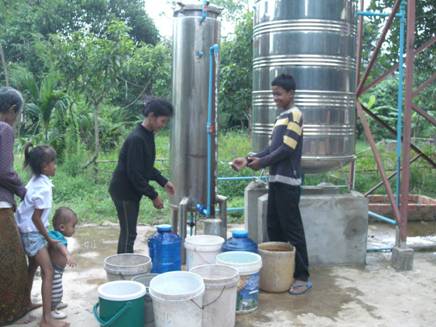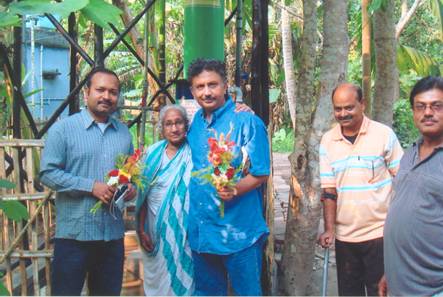One candle at a time
Three years ago, inspired by the teachings of a 20th-century poet, three students, a researcher and an engineering professor created a nonprofit organization with an international vision.
This spring, their Tagore-SenGupta Foundation (T-S) won the 2011 Reed Elsevier Environmental Challenge, an international contest that aims to improve people’s access to safe and sustainable water.
T-S received the first-place prize of $50,000 to implement its mixture of community development and innovative infrastructure in Cambodia.
Arup SenGupta, professor of civil and environmental engineering and of chemical engineering, says T-S is inspired by Rabindranath Tagore, a poet and writer from Calcutta who won the Nobel Prize for Literature in 1913.
Tagore’s philosophy—that knowledge must be applied to make a tangible difference in the world—is the common thread of the projects T-S has undertaken.
The prize-winning project, “Sustainable Treatment of Contaminated Groundwater in Cambodia: Turning a Crisis into an Economic Enterprise,” seeks to install in 12 Cambodian villages and schools a system that removes arsenic from groundwater.
Developed by SenGupta and his students over the past 15 years, the system is being used on four continents, including 200 villages in Eastern India, home to the world’s worst arsenic crisis.
A multidisciplinary team
T-S’s other founders represent a variety of backgrounds. Sudipta Sarkar is a research associate in the department of civil and environmental engineering. William Brehm earned a B.A. in international relations in 2008 and an M.Ed. in international comparative education in 2010.
Cameron Copeland earned bachelor’s degrees in international relations and integrated business and engineering in 2009, while Kelsey Hunter holds a bachelor’s in international relations (2008) and a master’s in economics (2009).
The group’s members share Tagore’s belief that a few people with the right tools and a lot of passion can create a big difference, “one candle at a time.”
“T-S is intended to bring the fruits of cutting-edge research to the people who need them most,” says Sarkar, “and also to use technology to transform any public-health related crisis into an opportunity for growth.”
Developing long-term water equity
According to most estimates, more than 2 billion people worldwide lack access to clean drinking water. Brehm says the problem is more than just an engineering challenge.
“Clean water, like education, is a fundamental right [for] all humans, regardless of location, income, or status.”
T-S’s efforts in Cambodia expand on results in communities in India, the U.S. and elsewhere, where SenGupta’s technology has proven to be successful, sustainable and scalable.
With the help of the grant, T-S will install arsenic-removal units in villages and schools in Cambodia, where water contains up to 20 times the amount of arsenic deemed safe by the World Health Organization.
Brehm, who is spending 18 months in Cambodia with T-S and another organization, This Life Cambodia (TLC), says technology is just part of the solution.
“The technology to filter arsenic has been tested and more or less proven to work, but technology is only half the battle,” he says. The other half is establishing water councils that ensure the equitable distribution and sustainability of the filters.
“We [hope to] leverage the short-term success of reduced arsenic contamination into long-term equity where communities address and take ownership of their own development.”
A future for water security
After the Reed Elsevier grant concludes, SenGupta, Sarkar and Brehm say T-S will take on challenges in other countries and communities.
The Foundation is already working to address severe fluoride contamination in groundwater in Africa and Asia, and sea water desalination globally.
“The goal is to scale up these activities once we find success in Cambodia,” says Brehm. “We will learn a lot about how communities organize around water as we begin to install the filters.”
Posted on:



